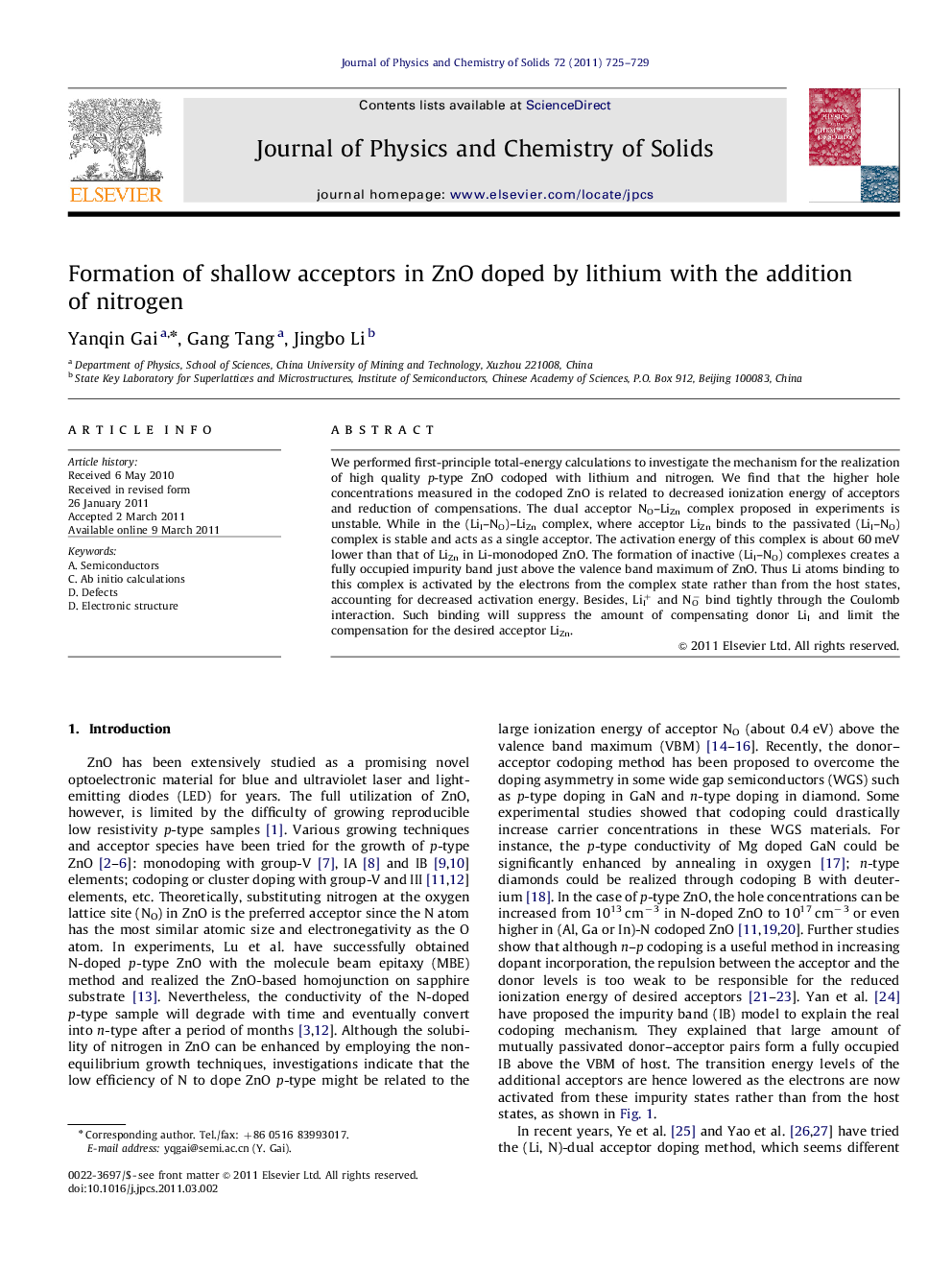| Article ID | Journal | Published Year | Pages | File Type |
|---|---|---|---|---|
| 1517028 | Journal of Physics and Chemistry of Solids | 2011 | 5 Pages |
We performed first-principle total-energy calculations to investigate the mechanism for the realization of high quality p-type ZnO codoped with lithium and nitrogen. We find that the higher hole concentrations measured in the codoped ZnO is related to decreased ionization energy of acceptors and reduction of compensations. The dual acceptor NO–LiZn complex proposed in experiments is unstable. While in the (LiI–NO)–LiZn complex, where acceptor LiZn binds to the passivated (LiI–NO) complex is stable and acts as a single acceptor. The activation energy of this complex is about 60 meV lower than that of LiZn in Li-monodoped ZnO. The formation of inactive (LiI–NO) complexes creates a fully occupied impurity band just above the valence band maximum of ZnO. Thus Li atoms binding to this complex is activated by the electrons from the complex state rather than from the host states, accounting for decreased activation energy. Besides, LiI+ and NO− bind tightly through the Coulomb interaction. Such binding will suppress the amount of compensating donor LiI and limit the compensation for the desired acceptor LiZn.
► The dual acceptor NO–LiZn complex is unstable. ► The (LiI–NO)–LiZn complex is stable and act as a shallow acceptor. ► Inactive (LiI–NO) complexes creates an impurity band above the VBM of ZnO. ► LiI+ and NO− bind tightly and limit the compensating donor LiI.
